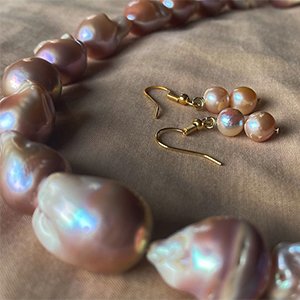Sustainability: The Key to a Cleaner Ocean and the Wonders of Pearls

The Importance of Sustainability for Ocean Health
Sustainability is increasingly recognized as a vital approach in safeguarding the health of our oceans. The aquatic ecosystems face numerous threats, including pollution, overfishing, and climate change, each of which has detrimental effects on marine life. By adopting sustainable practices, we can mitigate these threats and foster a healthier marine environment, which is essential for biodiversity and the overall balance of our planet.
Pollution, particularly from plastic waste and chemical run-offs, has created vast areas in the oceans where marine life struggles to thrive. Sustainable waste management practices, such as reducing single-use plastics and properly disposing of hazardous materials, are essential in combating this issue. Moreover, initiatives that promote recycling and environmental clean-up drives play a crucial role in fostering ocean health.
Overfishing presents another substantial threat, leading to the depletion of fish populations and disrupted ecosystems. Sustainable fishing practices, which include regulating catch limits and adopting selective fishing methods, aim to preserve marine biodiversity while allowing fish populations to recover. The implementation of marine protected areas has also shown promise in alleviating the pressure on overexploited marine species.
Climate change significantly impacts ocean health, causing rising temperatures and acidification, which threaten coral reefs and marine species. Sustainable practices can contribute to addressing these changes. For instance, the promotion of renewable energy sources and reducing carbon emissions are critical steps in mitigating climate effects. Successful case studies, like the revival of coral reefs through restoration projects, illustrate the positive impacts of sustainability initiatives.
Ultimately, embracing sustainability in our interaction with ocean environments is not just beneficial; it is essential. By fostering a collective commitment to sustainable practices, we can ensure a cleaner ocean that supports diverse marine ecosystems, vital for future generations. This commitment will not only enhance ocean health but also lead to the preservation of natural wonders, such as pearls, which are intricately connected to vibrant marine ecosystems.
The Beauty of Pearls: A Sustainable Treasure of the Ocean
Pearls, often perceived as symbols of elegance and luxury, are natural gems formed through an intricate process within the depths of the oceans. This beauty arises when a mollusk, typically an oyster or a mussel, secretes layers of aragonite and conchiolin in response to an irritant, such as a grain of sand. Over time, this layering results in the formation of a pearl, which can vary in shape, size, and color, depending on the species and environment. The market offers an array of pearls, including freshwater, saltwater, and cultured varieties, each showcasing unique characteristics that delight admirers and collectors alike.
In recent years, the focus on sustainability has emerged as a critical aspect of pearl production. Sustainable pearl farming practices not only yield high-quality gems but also maintain ecological balance and support marine life. Traditional methods of pearl farming can be harmful, leading to overharvesting and damaging ecosystems. However, eco-conscious pearl farmers are adopting sustainable techniques that ensure minimal impact on the ocean’s environment. These practices often include cultivating oysters in carefully managed settings that preserve natural habitats and promoting biodiversity, thus allowing marine ecosystems to thrive while producing beautiful pearls.
Throughout history, pearls have held significant cultural importance, symbolizing purity and sophistication. They have been cherished in various societies for centuries, adorning royalty and esteemed individuals alike. Today, as consumers increasingly seek sustainable fashion choices, pearls present an opportunity to beautifully bridge the gap between style and environmental responsibility. Embracing pearls as a sustainable accessory not only enhances personal elegance but also fosters a connection to the ocean and promotes responsible practices within the fashion industry. This dual relationship between appreciating natural beauty and supporting sustainable ocean practices reinforces the need for an eco-friendly future.









